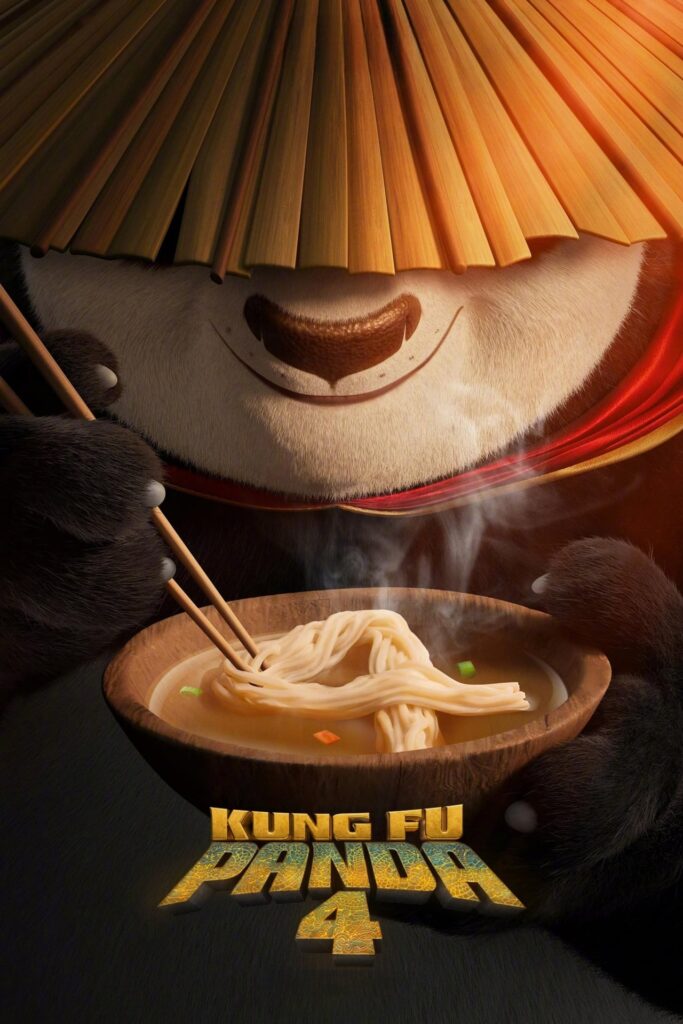“Kung Fu Panda” is one of Dreamworks’ and animation’s strongest franchises. Following two great entries and one pretty good one, the series seemed to have reached its end. However, a staggering eight years after the previous installment, “Kung Fu Panda 4” was released. The movie, while nowhere near as good as the first two entries, is still enjoyable, on par with its predecessor, “Kung Fu Panda 3,” and shows promise for the future of the franchise.
This film is not meant to be the fourth entry in a tetralogy, but rather the first entry in a new trilogy. This distinction becomes clear from a variety of factors. Firstly, the story centers around Po needing to choose the new Dragon Warrior so he can become the spiritual leader of the Valley of Peace, signaling a different direction for the franchise’s story. Secondly, the cast of characters does not feature the Furious Five, opting instead to focus on one new martial artist, Zhen. Thirdly, the film looks very different from previous entries. With a brighter, smoother color palette and a more simplistic animation style, possibly from a lower budget, the visual aesthetic of the movie is distinct from the original trilogy.
These changes, and the lack of similarity to the third, and to a greater extent first and second movies, are probably what underlies much of the negative response to this entry. However, this movie and the inevitable sequels to it, will probably have a similar trajectory to the “Star Wars” prequel trilogy, which were poorly received at release, but have since grown to be fan favorites, once they were out of the shadow of their predecessors.
This film was overall a good time and there are several factors which contribute to that. Jack Black and James Hong are as good as ever as Po and Mr. Ping. Black plays an older, more experienced Po than in previous films, but this works for the story and the portrayal is as lovable as ever. While the Furious Five do not show up in any meaningful way, this works well for the story, and they would have felt shoehorned in if they were included. The villain is fairly menacing in voice portrayal and especially in animation, even if the writing is lackluster. Some of the fight scenes have problems, which will be discussed later, but when they work, they really work. The movie does not overstay its welcome with a brisk 90 minute runtime. Lastly, spoiler, the credits are a training montage with the Furious Five and Zhen, while a rock cover of “Hit Me Baby One More Time” by Tenacious D, Jack Black’s Band, plays, making it easily the best part of the movie. While it is unfortunate that the credits outshine the actual movie, that is more a reflection of the credit’s quality, not the movie’s lack of it.
The film is not, however, without its problems. The budget is noticeably lower than the original three movies, and while this in some ways works to the movie’s credit, giving it a distinct style, it also makes the movie look worse in many ways than the previous entry nearly a decade earlier. The voice cast is noticeably worse. This movie introduces Akwafina to the franchise. Her portrayal of Zhen is serviceable at best and still has most of the grating tendencies her acting has become associated with. Dustin Hoffman gives a much less energetic performance as Shifu this time, not bringing the same life to the role as he used to.
The movie’s writing is not as witty; the jokes are usually fine, not great, and fairly juvenile, with a few laugh-out-loud exceptions. However, these exceptions are due to the delivery, especially Hong as Mr. Ping, not from the quality of the writing. The jokes also undercut serious moments in a clumsy way several times. Most seriously for a martial arts movie, the fight and/or action scenes are fewer and further between in this entry, and several are either boring or edited in such a way that they are difficult to follow.
This movie, while overall positive, has some issues that seem to be the problems of a new creative team finding their footing. If they learn from these mistakes and improve them in the next movies, there is a bright future for the “Kung Fu Panda” franchise.
